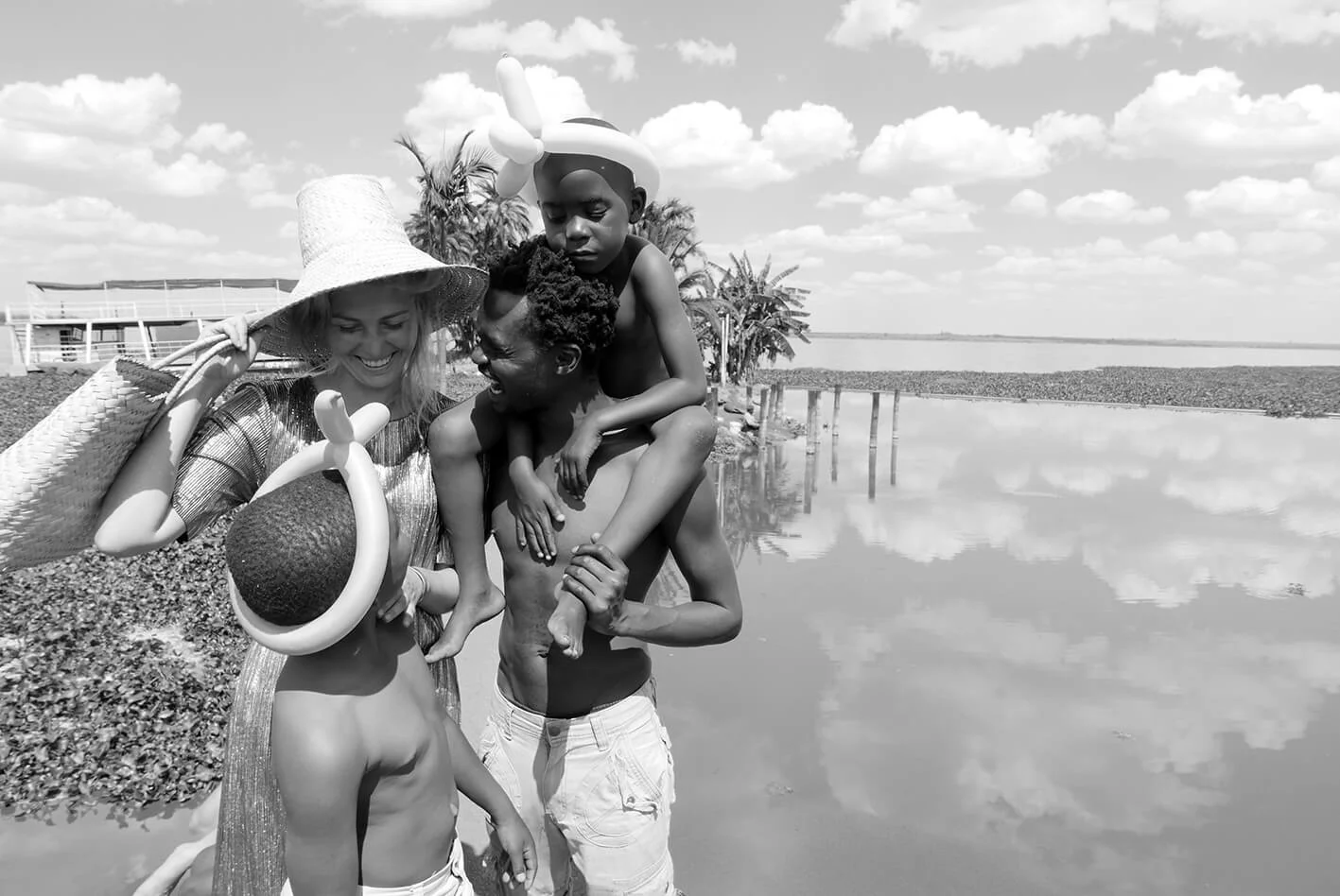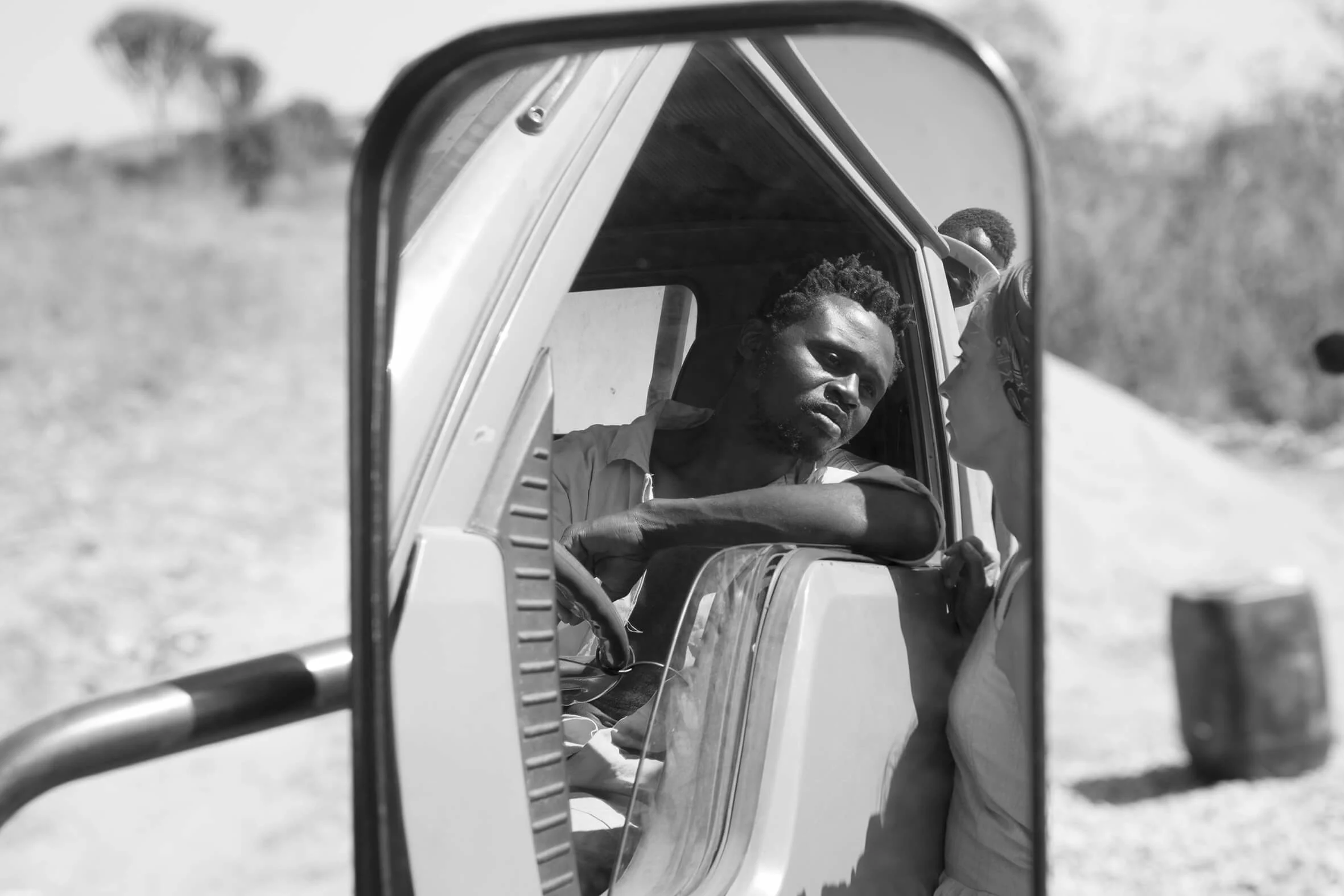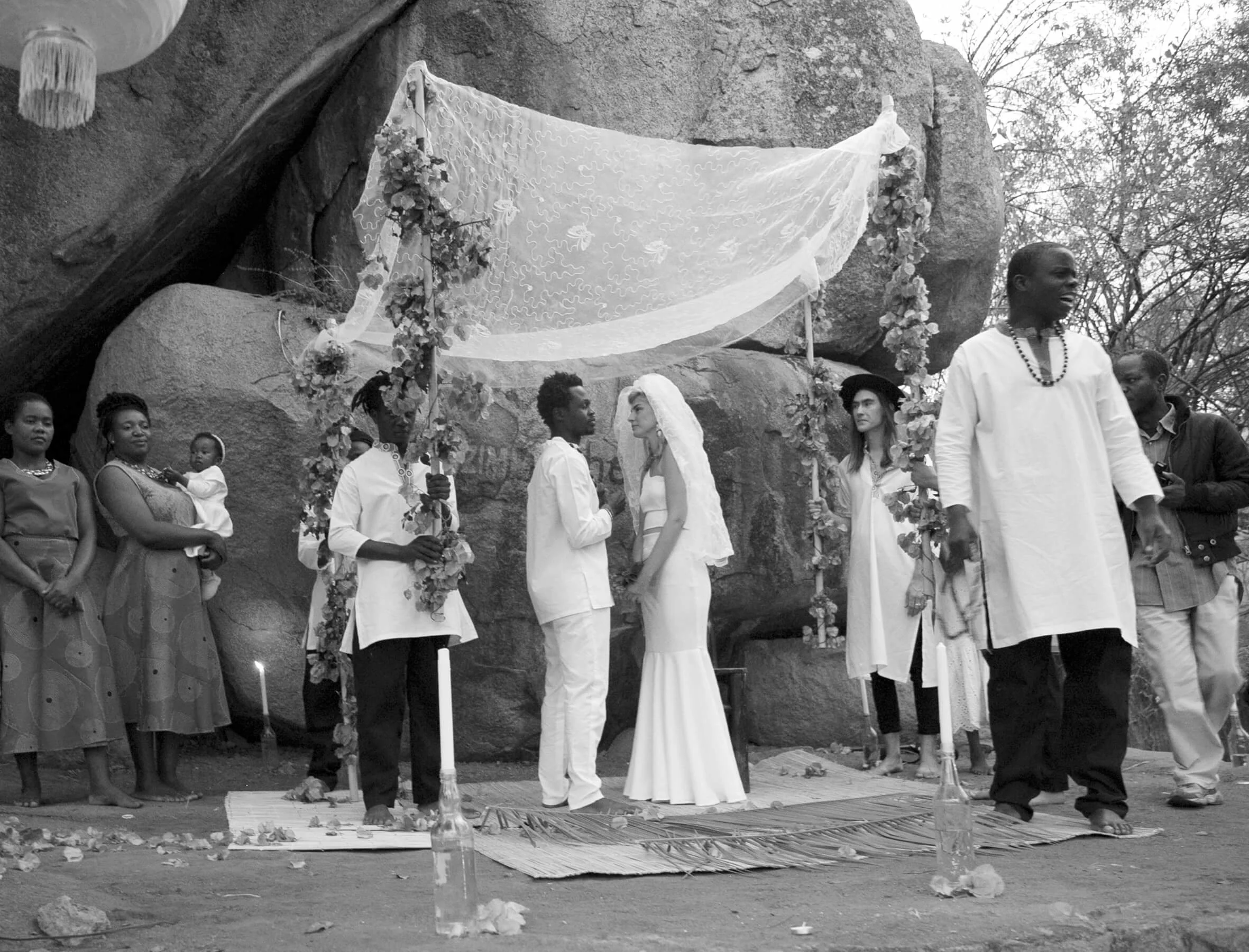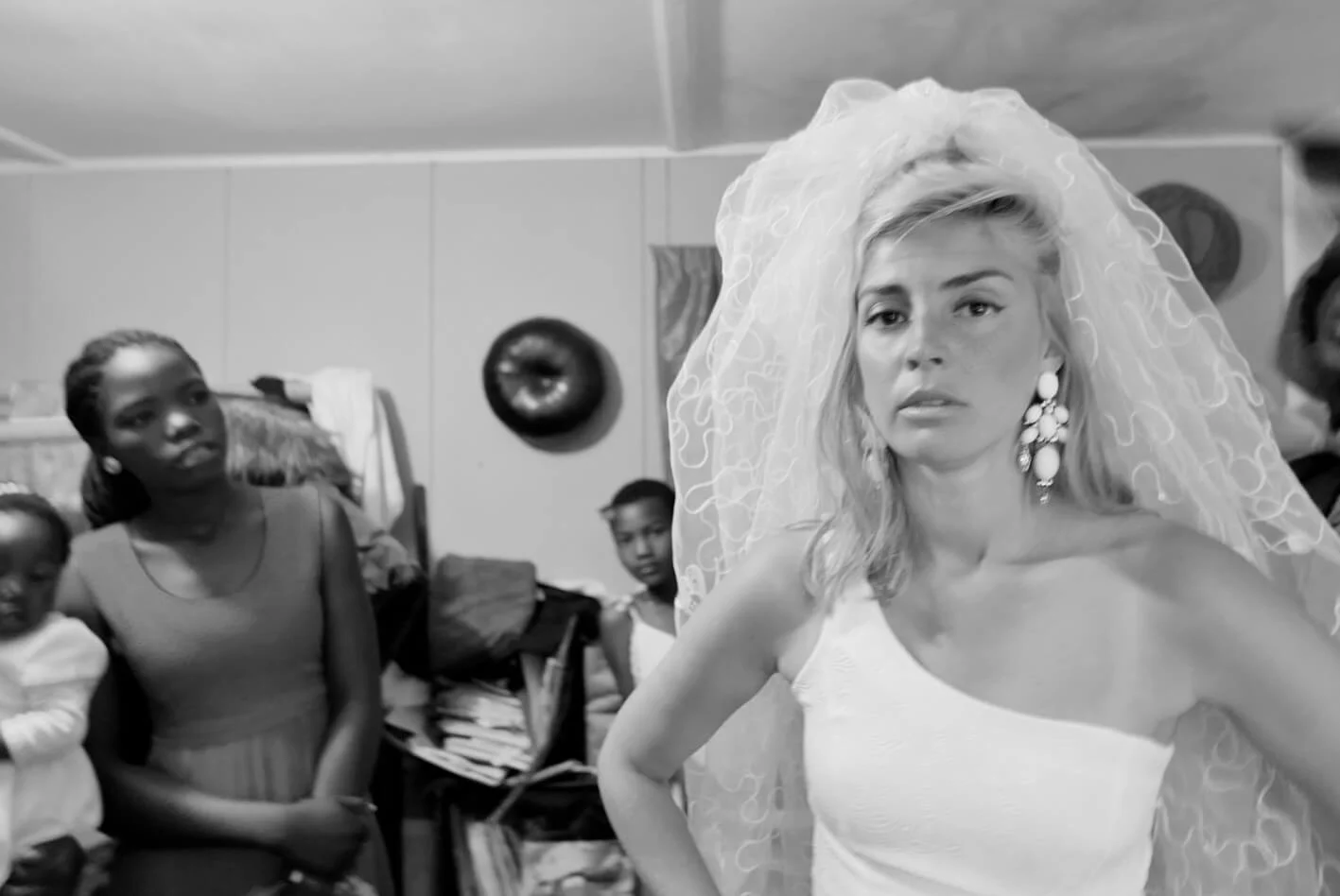

Nothing about the project 1972 is straightforward. Over a collection of 16 black and white images masquerading as documentary photography, artists Rachel Monosov and Admire Kamudzengerere turn themselves into R. and A., an interracial couple who live in the year 1972 in rural Zimbabwe.


Are we as ‘color blind’ as these images suppose we may be?
In the tumultuous time during the country’s struggle for independence from British rule, relationships between races were strained and though not illegal, the marriage between a white woman and a black man would have been socially and culturally taboo. By becoming R. and A., Rachel and Admire offer an alternative history to question whether anything has changed.
“Sure, it’s not 1972 anymore, and our interracial relationship is not illegal in most places in the world… but do we really live in the utopia R. and A. show us?” they ask. “Are we as ‘color blind’ as these images suppose we may be?”
Rachel was visiting Zimbabwe in 2015 with the art collective CTG when she met Admire. “The moment we saw one another’s work, we immediately became interested in each other’s process,” the two say. They’ve been collaborating ever since. The idea for 1972 took hold while they were in the National Archives of Zimbabwe.

“We were looking at old photographs and we realized that there was no likeness of us,” they explain. “The history of this country is so different to what we experience today. We wanted to make something impossible possible. So we thought, what if we took photos of ourselves and snuck them into the archives?”
The artists performed various life events which were documented in photographs: getting married, building a house, holidaying at a lake with the kids. “We focused on the most significant moments,” Rachel and Admire say, “those that change one’s life forever.” Time is warped too in the project; set in just one year, the images span close to a decade showing R. and A.’s children growing from babies to young boys.

To know what is documentary and what is staged is a blurry line.
The series questions reality too, leaving the viewer wondering what is fact and what is fiction. For example, for the wedding scenes, Rachel and Admire threw a real life wedding where several hundred people were invited to witness them get married. However, when quizzed the artists remain ambiguous: “How do you know we didn’t stage it?”
In this way the project raises a pressing issue about whether we can rely on documentary photography to tell the truth. “To know what is documentary and what is staged is a blurry line,” Rachel and Admire say. “You can’t believe everything you see. And, it’s important to think about the moments, the space, between these images.”
Interestingly, 1972 has since been included alongside ‘real’ archival photographs from the early and mid-20th century in the permanent collection at Northwestern University’s Block Museum of Art in Evanston, Illinois – blurring the line between reality and fiction even further.


The project shines a light on the importance of text in relation to documentary photography to provide context, but also on how captions can be misleading. Each photograph in the series is presented with written information about the locations and the events taking place in the image. “The text seduces the viewer into the narrative,” the duo says. But it can’t necessarily be trusted: the artists got the information for their captions from Wikipedia, notorious for misinformation.
Styling played an important part in creating plausible archival imagery and Rachel sourced from their own wardrobes to put together outfits that pass for 70s fashion. Interestingly, the artists opted for digital over film photography. The paper, the printing quality and the contrast in the images were adjusted to look like gelatin silver prints from the era.

Though the images are made to look like they’re from 1972, the artists say the stories within them are not a re-enactment of another time. “It’s more an exercise of layering another time with an alternative narrative – our story,” they say. “We’ve been spending time in Zimbabwe together since 2015. We inserted ourselves into happenings to create convincing scenarios. Our own experiences, our own lives are the research.”
The work was made in various locations around Zimbabwe – Admire’s family home and the neighborhood he grew up in, surrounding villages, and Dzimbanhete Arts & Culture Interactions where the artists have been running an art residency with CTG Collective since 2015.
We inserted ourselves into happenings to create convincing scenarios. Our own experiences, our own lives are the research.
“We know all these spaces well,” Rachel and Admire say. “We know the people and have friends we trust and who trust us. It made it that our sometimes ‘strange’ creative behavior was not questioned but indulged.” The two also traveled to tourist locations where the recognisable landscapes could root the project in familiar geography.
By making up this extraordinary story of an unlikely couple sharing their lives together during a time of political turmoil, Rachel and Admire want us to ask ourselves what images will define our present moment?
Words by Alix-Rose Cowie

